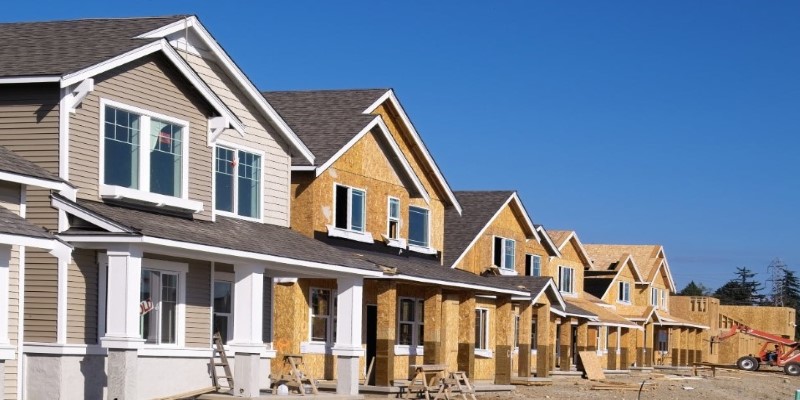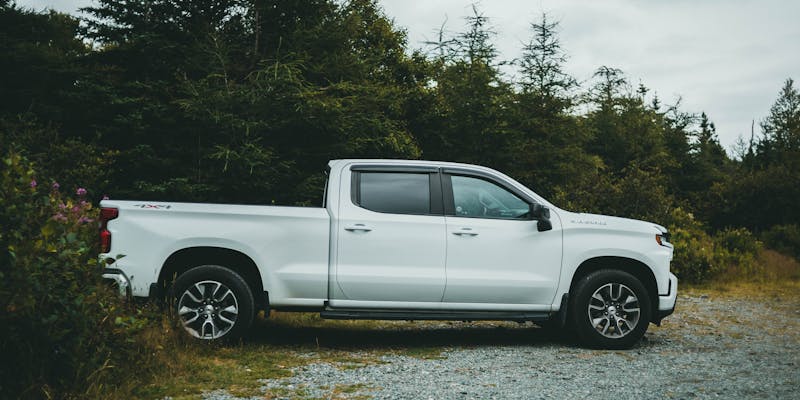Your May 2024 Guide to Economical Rent-to-Own Homes in the U.S
Rent-to-own homes are becoming an increasingly popular option for people who want to own a home but need more time or resources to purchase one outright. With the rising cost of living, many are turning to this alternative as a feasible pathway to homeownership.

This May 2024 guide will cover everything you need to know about finding cheap rent-to-own homes in America. Whether you're just starting your search or looking to finalize a deal, this guide will help you navigate the current market, understand the benefits, and avoid potential pitfalls.
Understanding Rent-to-Own Homes
Rent-to-own homes offer a unique blend of renting and home buying. In a rent-to-own agreement, you rent a home for a specified period with the option to purchase it at the end of the lease term. Part of your monthly rent goes toward a down payment, making it easier to transition from renting to owning without needing a large sum upfront. This option is particularly appealing for those who may not qualify for a traditional mortgage due to poor credit or insufficient savings.
Rent-to-own agreements typically have two main components: the lease agreement and the option to purchase. The lease outlines the rental terms, including the duration and rent amount, while the option to purchase specifies the home's sale price and the timeframe within which you can buy the property. This arrangement allows renters to lock in a purchase price, which can be advantageous in a rising housing market.
How to Find Cheap Rent-to-Own Homes in America?
Finding affordable rent-to-own homes can be challenging, but with the right approach, its possible to locate a property that fits your budget. Here are some steps you can take to find cheap rent-to-own homes in America:
Search Online Platforms: Numerous websites specialize in rent-to-own properties. Websites like RentToOwnLabs, HousingList, and Zillow allow you to filter results by price, location, and other preferences. These platforms often have comprehensive listings and can be a great starting point in your search.
Consult Local Real Estate Agents: Local real estate agents often have insider knowledge of rent-to-own opportunities in specific neighborhoods. They can also help you navigate the terms of the agreement and ensure youre getting a fair deal.

Explore Government Programs: Some government programs assist first-time homebuyers and may include rent-to-own options. The U.S. Department of Housing and Urban Development (HUD) offers resources that can help you find affordable housing and understand your rights as a renter.
Consider Less Competitive Markets: Home prices vary significantly across the country. If youre flexible with your location, consider looking in less competitive markets where property prices are lower. Smaller towns and rural areas often have more affordable rent-to-own options compared to major cities.
Navigating the Rent-to-Own Agreement
A rent-to-own agreement can be complex, and its essential to understand all the terms before signing. Here are some key elements to consider:
Purchase Price: The purchase price is typically agreed upon when you enter the rent-to-own agreement. This price is locked in for the duration of the lease, which can be advantageous if property values rise. However, its crucial to ensure that the price is fair based on the current market conditions.
Option Fee: This is a non-refundable fee paid upfront to secure the option to purchase the home at the end of the lease term. The option fee is usually a percentage of the purchase price and can vary significantly. Make sure you understand how much this fee will be and whether it will be applied to the purchase price.
Rent Credit: A portion of your monthly rent may go toward the purchase price or down payment. This is known as rent credit. Ensure that the agreement clearly states how much of your rent will be credited toward the purchase and how this will be applied.
Maintenance and Repairs: In some rent-to-own agreements, the tenant is responsible for maintenance and repairs. This can add to your overall cost, so its essential to clarify who is responsible for what before signing the agreement.
Pros and Cons of Rent-to-Own Homes
Rent-to-own homes offer a unique pathway to homeownership, blending aspects of renting with the opportunity to purchase. However, like any financial arrangement, rent-to-own agreements come with both benefits and drawbacks. Understanding these pros and cons can help you decide if this option is the right fit for your situation.
Pros of Rent-to-Own Homes
No Immediate Mortgage Requirement: One of the most significant advantages of rent-to-own homes is that you don't need to qualify for a mortgage immediately. This can be especially beneficial for individuals with poor credit or insufficient savings, as it provides time to improve credit scores and save for a down payment while still living in the home.
Locked-in Purchase Price: In a rent-to-own agreement, the purchase price of the home is typically set at the beginning of the lease term. This means that even if property values rise during your lease period, you can still buy the home at the agreed-upon price. This locked-in price can offer peace of mind and potential savings in an appreciating real estate market.

Equity Building: A portion of your monthly rent payments is usually credited toward the purchase price or down payment. This allows you to build equity over time, even before you officially own the home. Unlike traditional renting, where your payments only cover the cost of living, rent-to-own agreements help you invest in your future homeownership.
Cons of Rent-to-Own Homes
Non-Refundable Option Fees: To secure the option to purchase the home, you often have to pay an upfront option fee, which is typically non-refundable. If you decide not to buy the home or cannot secure financing by the end of the lease term, you could lose this fee, which can be a significant amount of money.
Risk of Losing Investment: If you are unable to purchase the home at the end of the lease termwhether due to financial constraints, an inability to secure a mortgage, or other reasonsyou risk losing any money paid toward the option fee and rent credits. This potential loss makes rent-to-own a riskier option compared to traditional renting.
Maintenance Responsibilities: In many rent-to-own agreements, the tenant may be responsible for maintenance and repairs, which are typically the landlord's responsibility in standard rental agreements. These additional costs can add up and should be factored into your decision-making process.
Conclusion
Rent-to-own homes can be an excellent option for those looking to transition from renting to owning without the immediate need for a large down payment or a mortgage. By understanding the ins and outs of rent-to-own agreements and carefully considering your options, you can find a cheap rent-to-own home that fits your budget and sets you on the path to homeownership.
Related Articles

Cost-Effective Solutions for Roof Leaf Cleaning
By - Rick Novak
Sep 05, 2024

Upgrade your sleep with a smart bed! Discover tips to sleep smarter and improve your restful experience. Find out how technology can enhance your bedtime routine.
By - Rick Novak
Apr 04, 2024

The Mind-Blowing Chevy Silverado Has Arrived: What You Need to Know
By - Kelly Walker
Apr 06, 2024

Plaque Psoriasis Uncovered: A Comprehensive Guide
By - Rick Novak
Sep 04, 2024

Understanding the Appeal of Coworking Spaces and Shared Offices
By - Kelly Walker
Sep 05, 2024

A Step-by-Step Guide to Finding Online MBA Courses Close to Home
By - Kelly Walker
Sep 04, 2024

Is It Easy to Learn Artificial Intelligence? What You Need to Know
By - Rick Novak
Apr 06, 2024

Subaru Forester - The Best Car For Seniors in 2024
By - Rick Novak
Apr 05, 2024

Unwind Without Worry: Exploring the Benefits of All-Inclusive Vacations
By - Rick Novak
Sep 06, 2024

The Unmatched Appeal of the New Jeep Grand Cherokee: An Ultimate Guide
By - Rick Novak
Apr 06, 2024

The Complete Guide for Seniors to Apply for Free Internet Services
By - Rick Novak
Sep 04, 2024

Things to Consider Before Buying Unused Cars with Zero Miles, Now Free
By - Kelly Walker
Apr 04, 2024
